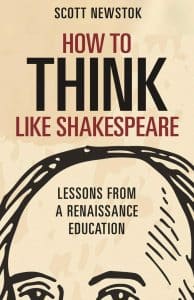In the mid-1990s, when email was all the rage and the World Wide Web was making its commercial appearance, a friend who was something of an IT guru told me about the DIKW pyramid, sometimes called the DIKW hierarchy. He explained how data becomes information, information becomes knowledge, and knowledge becomes wisdom.
I confess I didn’t take this too seriously. Even this early in the IT revolution, I was already skeptical about the heaven on earth promised by proponents of information technology. I was less concerned about how data leads to wisdom and more concerned with how the technology could be used and how it was likely to change everything, for good and for bad. Twenty-five years later, if the hierarchy was accurate, then we should be drowning in wisdom, which we clearly are not. We may have more data, more information, and more knowledge, but somehow wisdom has decoupled from the train, assuming it was even there in the first place.

According to Newstok, Firestein discovered that it isn’t information that generates knowledge, but informed ignorance. “Mere data transmission doesn’t induce deep learning. It’s the ability to interact, to think hard thoughts in the presence of other people.”
So much for the DIKW hierarchy, unless the “I” stands for ignorance. And knowledge doesn’t automatically lead to wisdom.
How to Think Like Shakespeare is indeed about how William Shakespeare envisioned, researched, and wrote his plays. But it is something more than that. It is a book about thinking and education, and how we generally do both rather poorly. “Education isn’t merely accumulating data; machines can memorize far more, and far less fallibly, than humans,” Newstok says. He builds a bridge to the world of Shakespeare, explaining how students at the time were trained to think. It’s something of an alien world compared to that of our own day, when education at all levels seems more obsessed with training for future employment, being relevant, and attempting to help us harness and ride the great engine (or god) of Change.
In 14 relatively short chapters, Newstok uses Shakespeare, his life, and his writings to address various aspects of thinking and education. These include ends, craft, fitness, place, attention, technology, imitation, conversations, and more. He tells a fascinating, readable story, and he succinctly makes an impressive case. We’re doing a lot of education wrong, and Shakespeare can help us a path forward.

Scott Newstok
Newstok is the author of Weyward Macbeth: Intersections of Race and Performance and Quoting Death in Early Modern England: The Poetics of Epigraphs Beyond the Tomb. He’s served as the editor of Kenneth Burke on Shakespeare and Paradise Lost: A Primer. He is the director of the Pearce Shakespeare Endowment at Rhodes College in Memphis, Tennessee.
How to Think Like Shakespeare isn’t a how-to manual about thinking and education. It won’t teach us to write a 21st-century version of Macbeth or Henry V. But it does force us to consider how we educate and for what purpose. And it says a better alternative is ours to grasp, if we’re courageous enough to pursue it.
I was right to be skeptical about the DIWK hierarchy.
Photo by Eric, Creative Commons, via Flickr. Post by Glynn Young.
__________________________

“I require all our incoming poetry students—in the MFA I direct—to buy and read this book.”
—Jeanetta Calhoun Mish

L.L. Barkat says
This sounds fabulous, Glynn.
(And I am thinking that the hierarchy needs a little Tweetspeak in its pyramid 😉 ).
Glynn says
Yes! I agree!
I think I’m always suspicious of anything that provides a simple explanation, like the DIKW hierarchy.
I always frowned whenever someone mentioned Abraham Maslow’s “Hierarchy of Needs,” the supposed theory of human motivation that sounds eminently logical, starting with meeting basic needs of survival and moving up to self-actualization and transcendence. It sounded too good to be be true. When he proposed it in 1943, psychologists and others pointed out there was virtually no scientific basis to it, which Maslow acknowledged. But it sounded true, and it was catchy, so it became ingrained in popular psychology and even a lot of human resources theory.
Where’s what they don’t tell you. Maslow looked at what he called the “master race” of people — Einstein, etc. — and the top 1% of college students. And even then, his methodology was faulty. He would have been better off including poetry somewhere in there.